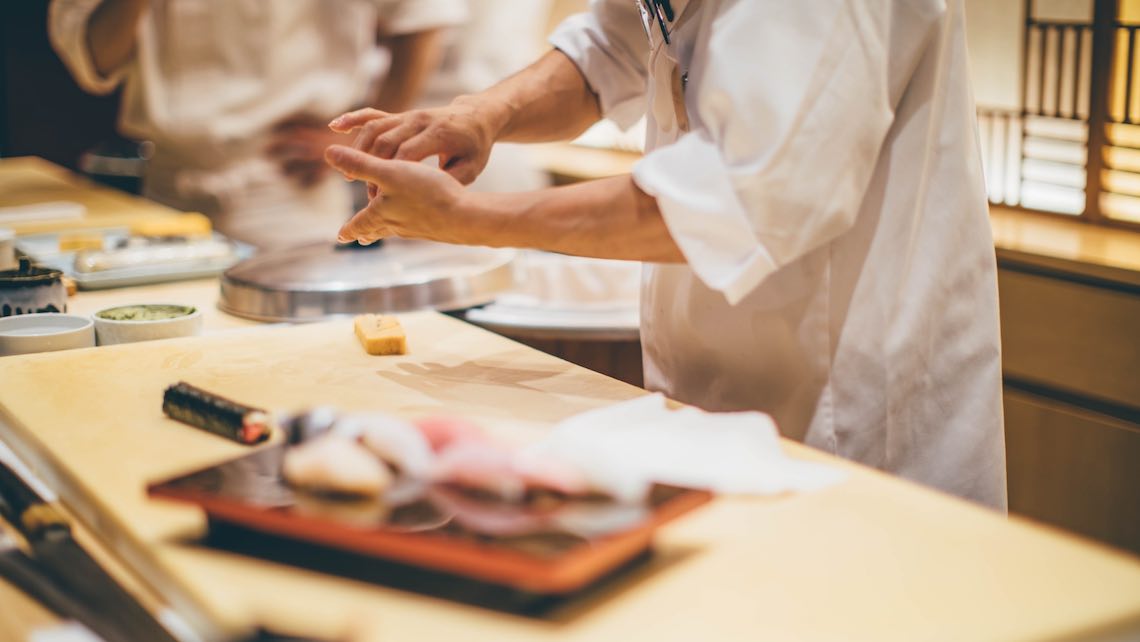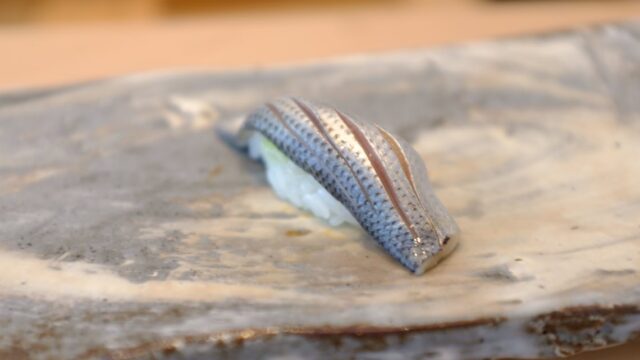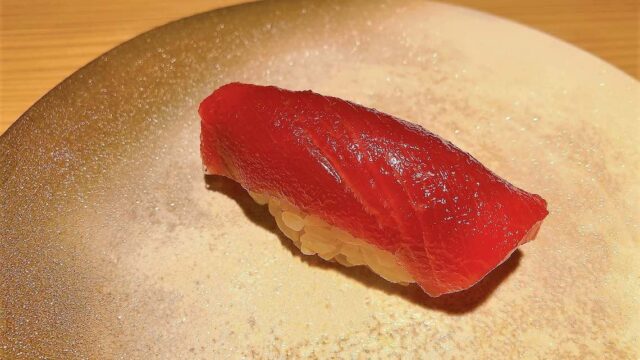Edomae Sushi

Japanese Name and Pronunciation:

[edomaezushi]
“Edomae sushi” refers to the traditional Tokyo-style sushi, which originated during the Edo period (1603-1868) and is characterized by the use of fresh seafood caught in the nearby waters of Tokyo Bay. Representative toppings of Edomae sushi include Anago (conger eel), Kohada (immature stage of the Dotted gizzard shad), and Zuke-Maguro (marinated tuna).
Edomae sushi differs significantly from the modern common nigiri sushi in two main aspects. Firstly, it uses “Akazu” (red vinegar) made from sake lees instead of rice vinegar for the sushi rice. Secondly, it involves an additional step of enhancing the flavor of the fresh toppings through meticulous preparation techniques.
In Edomae sushi, the toppings undergo various processing methods to bring out their deliciousness. The toppings are marinated or cured with vinegar, salt, simmered, or soaked in a special sauce. These additional processes are performed to elevate the flavors and textures of the raw fish.
The use of Akazu gives the sushi rice a distinct reddish hue and imparts a unique flavor. This type of vinegar contributes to the overall taste profile of Edomae sushi, setting it apart from other styles. Additionally, the preparation of the toppings involves careful handling and intricate techniques to accentuate their natural flavors.
Edomae sushi embodies a traditional approach where craftsmanship and attention to detail play a vital role. The combination of Akazu-infused rice and skillfully prepared toppings results in a culinary experience that showcases the depth of flavors and the artistry of the sushi chef.
Note: “Akazu” is a type of vinegar made from the lees or sediments left after sake production. It has a milder flavor compared to rice vinegar and is commonly used in traditional Edomae sushi.



